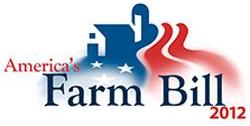Farmers Endorse Dairy Security Act as Best Approach
SARANAC LAKE, NY – At a field hearing today in upstate New York, the House Agriculture Committee heard from three dairy farmers that major reform is needed in farm policy, and all three endorsed the Dairy Security Act, H.R. 3062, as the best approach to making needed changes.
Friday’s hearing was the first of four meetings across the country that the House Agriculture Committee is holding to gather input for the upcoming Farm Bill. Neal Rea, a member of the NMPF Board of Directors, and a dairy farmer from Salem, NY, told the panel that reforms in dairy policy “must be multi-faceted, and seek to refocus existing farm-level safety nets, create a new program to protect farmers against low margins, and establish a way to better balance dairy supply and demand.” Rea is also chairman of Agri-Mark, a farmer-owned cooperative with members in New England and New York.
Rea said that his farm, like most other dairy farms, lost significant amounts of money in 2009, due to the combination of low milk prices and high feed costs, and did not benefit much from the safety net provisions of current policy. Rather than existing current programs, such as the price support and MILC payments, Rea testified that policies need to be changed to take into consideration the cost of producing milk.
“Margins, the difference between the feed costs and the milk price, became ever so important” for farmers who endured 2009, he said. The Dairy Security Act offers farmers the opportunity to obtain margin insurance that would protect against catastrophic equity losses when margins are compressed.
This approach, developed by Rea and other members of NMPF, requires “a new way of thinking about dairy economics,” he said, noting that previously, most of the focus had been solely on milk prices, but not input costs. “But if there is one lesson to be learned from 2009, it’s that change is needed,” Rea told the congressional panel.
Rea’s endorsement of the NMPF plan was echoed by Jeremy Verratti, a dairy farmer from Gasport, NY. He also noted that “margin insurance, promoted and partially subsidized by the federal government, would be very helpful in weathering the bumps in the road that disrupt normal market pricing.”
Verratti said that in some years, such as 2009, “these bumps are more like a boulder in the field you’re plowing, a small seismic shake, or even a widespread earthquake that threatens the foundation of an entire industry. As a young dairy producer, I will never forget the financial hardship of 2009.”
The third dairy farmer to offer his perspective to the committee was Eric Ooms, whose family owns a farm in Kinderhook, NY, and who was testifying on behalf of the New York Farm Bureau Federation.
“Farm Bureau supports the Dairy Security Act because the supply management component of this proposal is voluntary,” Ooms said, in reference to the market stabilization provision of the DSA. “If an individual producer chooses to limit production and the federal government wants to incentivize this, that is the producer’s decision and we support that,” Ooms said.
The National Milk Producers Federation, based in Arlington, VA, develops and carries out policies that advance the well being of dairy producers and the cooperatives they own. The members of NMPF’s 31 cooperatives produce the majority of the U.S. milk supply, making NMPF the voice of more than 32,000 dairy producers on Capitol Hill and with government agencies.


 Organization Will Promote Use of Logo to Differentiate American-Made Dairy Foods from Imports and Imitations
Organization Will Promote Use of Logo to Differentiate American-Made Dairy Foods from Imports and Imitations The
The  ARLINGTON, VA – The National Milk Producers Federation’s (NMPF) Board of Directors supported a resolution today urging Congress to pass a Farm Bill in 2012, one that contains an improved safety net for farmers in the form of the Dairy Security Act.
ARLINGTON, VA – The National Milk Producers Federation’s (NMPF) Board of Directors supported a resolution today urging Congress to pass a Farm Bill in 2012, one that contains an improved safety net for farmers in the form of the Dairy Security Act.




